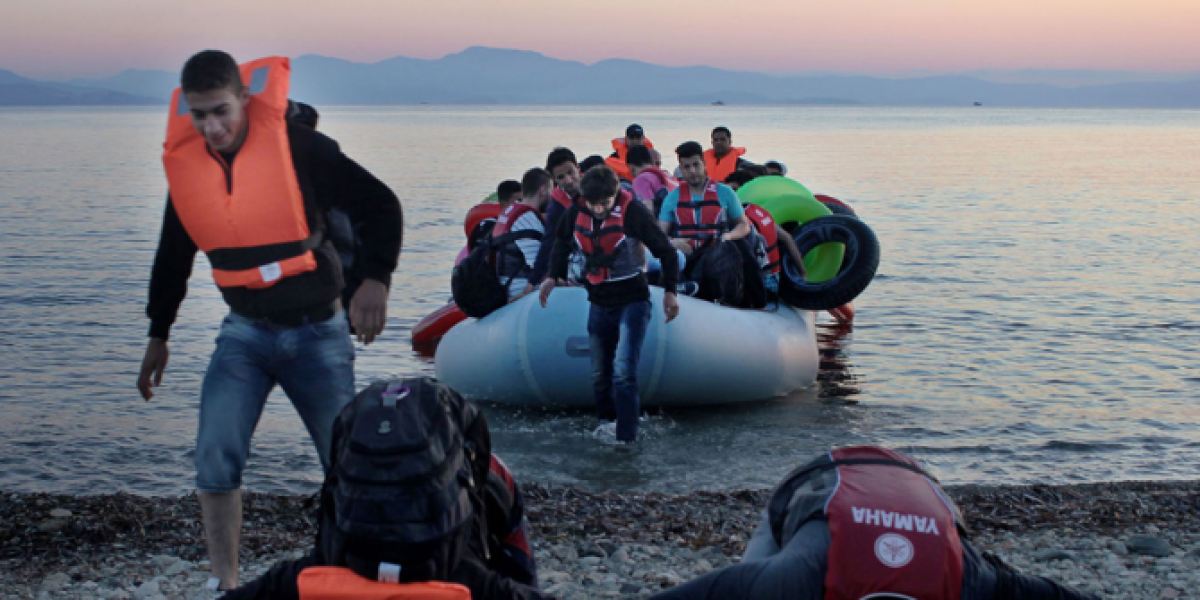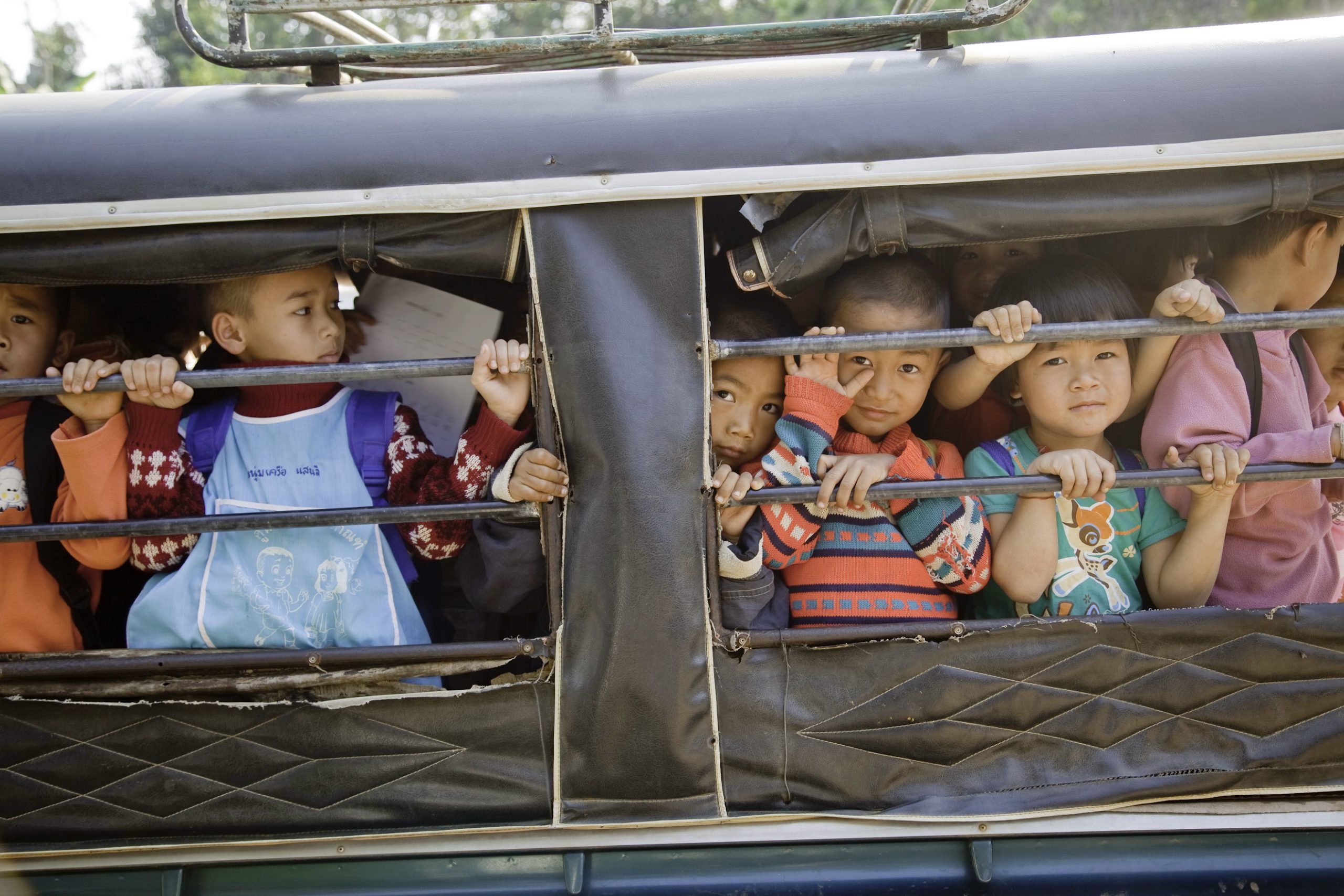Australia: Why stopping the boats does not solve the problem – Part 1
28 July 2016|Oliver White, Assistant Director, Jesuit Refugee Service

Austria’s foreign minister recently suggested that people seeking asylum in Europe should not be allowed to enter the continent, but should be held on offshore islands instead. Sebastian Kurz said that the principles of the “Australian model” should be applied to Europe, and went as far as to suggest that people who entered Europe “illegally” should lose their right to apply for asylum.
At first glance, the “Australian model” may seem attractive to politicians in Europe: this uncompromising and unapologetically militarised solution seems to have brought order to what had been a period of unregulated arrivals of thousands of people on Australia’s shores. In the words of the former commander of Operation Sovereign Borders Lieutenant General Angus Campbell, “The Australia government has introduced the toughest border protection measures ever…If you travel by boat to Australia you will never make Australia home.”
However, if Foreign Minister Kurz were to look more closely he would see that Australia’s tough border policies are having unforeseen and potentially catastrophic consequences.
The harm that Australia’s policies has caused to the people stranded on Nauru and Manus Island, those detained in mainland detention centres, and the nearly 30,000 people seeking asylum and living in the Australian community, is well documented. With the 2016 election now behind us, and the return of Coalition government, it is timely to review the government’s current strategy and ask the question: is “stopping the boats” a successful, long-term, sustainable approach?
If stopping the boats and securing Australia’s borders are the end goal – as the government unashamedly admits it is – then it appears the government has had a degree of success. The boats have been stopped from arriving on Australian shores; however, they have not stopped leaving Indonesia, Sri Lanka and Vietnam entirely.
While the number of boats attempting the journey to Australia has been dramatically reduced, people have not stopped trying to make their way to a country where they can find safety. In May of this year a boat with 12 Sri Lankans, including women and children, was intercepted off the Australian territory of Cocos (Keeling) Islands. Within two days the group had been returned to Sri Lanka. In fact, since Operation Sovereign Borders began in 2013, 26 boats have been intercepted, and a total of 708 people returned to the countries from which they fled.
What about the people who would have boarded boats headed for Australia, but have not done so because of its current policy of absolute deterrence? Has a “stop the boats” policy resolved the global challenge of forced migration?
Evidence has emerged in a recent paper by Caroline Fleay and Lisa Hartley[1] that “Australian policies are having disturbing impacts beyond our borders.” The authors describe how the Australian government’s direct collaboration with Sri Lankan security agencies has prevented the departure of people who are in fear of persecution and would like to seek asylum elsewhere.
The paper also outlines how the government’s policies restrict the ability of people seeking asylum to move beyond transit countries such as Malaysia, Thailand, and Indonesia, and effectively warehouse them in countries that deny them access to health services, education, and the labour market; these people also have little to no prospect of resettlement.
Alarmingly, the paper cites community members in Malaysia who claim that, because the route to Australia has been blocked, “those seeking safety and protection from their home countries are now undertaking longer and more hazardous journeys to Europe.” This troubling development points to an uncomfortable truth: all because people are not drowning on their way to Australia, this does not mean that they are not dying elsewhere. The complacency in Australia about the fate of those who can no longer arrive here by boat can be summed up in the old adage: out of sight, out of mind.
The publication of this research coincides with the release of the United Nations agency for refugees (UNHCR) Global Trends Report 2015. The report finds that an unprecedented number – some 65.3 million people, or one person in 113 – was displaced by conflict and persecution in 2015. The overwhelming majority – 86 percent – of those displaced reside in developing nations. They are there not because those countries have formally agreed to resettle recognised refugees through the United Nations resettlement programme, but because those countries have kept their borders open and offered much needed refuge.
The UN High Commissioner for Refugees, Filippo Grandi, has said, “At sea, a frightening number of refugees and migrants are dying each year; on land, people fleeing war are finding their way blocked by closed borders. Closing borders does not solve the problem.”
As conflicts in Syria, Iraq, Afghanistan, and South Sudan continue, the UNHCR is desperately urging neighbouring countries to keep their borders open. Australia’s policy of shutting its doors to people in need of protection undermines the requests from the UN to those countries, and completely ignores the plight of thousands of people stranded across the Asia Pacific region.
However, a border policy that is completely open is not the alternative to Australia’s “stop the boats” policy. Countries have the right to protect the integrity and security of their borders, and to regulate the movement of people across those borders. That right, however, cannot be allowed to render void the right of people to cross borders to seek asylum under the conventions of international law. It also should not countenance the return of people to countries where they may face persecution, harm, and violations of their human rights; or where they cannot receive a fair and timely hearing of their asylum claims.
Greater efforts must be made to reduce the need for people to take dangerous and irregular journeys in the first place. Rather than pouring valuable resources into returning boats and forcibly repatriating irregular migrants, Australia’s efforts should be focused on engaging our regional neighbours to strengthen cooperation, address the root causes of forced migration, and develop the region’s own protection infrastructure.
Historically, states in Asia Pacific have viewed protection as something that happens elsewhere, often in industrialised countries such as the U.S., Canada, and Australia. Assisting our neighbours to develop and coordinate asylum procedures could lead to the desirable outcome of refugees receiving the same treatment no matter where they go. One key consequence of increasing protection for asylum seekers in transit countries such as Thailand, Malaysia, and Indonesia would therefore be the reduction of onward movement to countries such as Australia.
The Australian government’s current strategy of preventing people from fleeing persecution in their countries of origin, and restricting people from leaving transit countries where governments are unable or unwilling to provide protection, is causing people to take longer and more dangerous journeys to Europe and other parts of the world. If Australia’s approach were to be universally adopted the entire global protection regime would grind to a halt. If you could not flee to another country without that country’s prior approval, which is essentially the case now with Australia, there would certainly be no phenomenon of refugees in this world. The result however would be a global catastrophe: millions of people would face harm and death in the places from which they cannot flee.
Stopping the boats, while undoubtedly an expensive and difficult operation for Australia’s Border Force, is a simplistic solution to a complex problem: people moving irregularly in search of safety and security. Forced migration is a challenging problem with no simple solution. In the short to medium term, countries need to come together in an effort to manage the challenge more effectively. Australia’s current plan – to deter, deflect and ignore – is prohibitively expensive, inhumane, and ineffective in addressing the global challenge of forced migration. Crucially, a unilateral policy of closed borders fatally and comprehensively undermines the architecture of the global protection regime.
Next…The government argues that by stopping the boats more places can be offered through our humanitarian programme to refugees waiting patiently in UNHCR administered camps around the world. In this policy series we will examine some of the problems with this argument, most importantly, how stopping the boats undermines the architecture of the global protection regime. We will examine the effectiveness of the global resettlement program as a solution for the worlds displaced; the ethics and morality of stopping the boats; and finally, what an effective regional plan for refugee protection would look like.
[1] Fleay, C. & Hartley, L. (2016). The regional impacts of Australian asylum seeker policies: What ‘stopping the boats’ means for people seeking asylum in our region. Academy of the Social Sciences Australia Academy Papers 2/2016, Canberra. http://www.assa.edu.au/publications/papers/234


